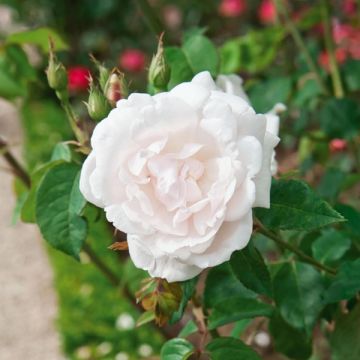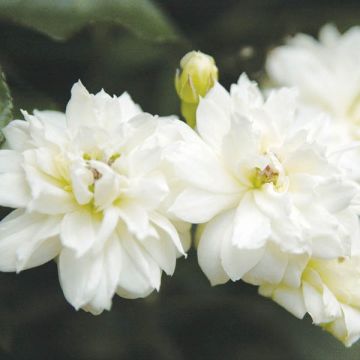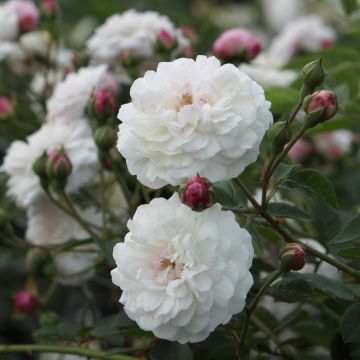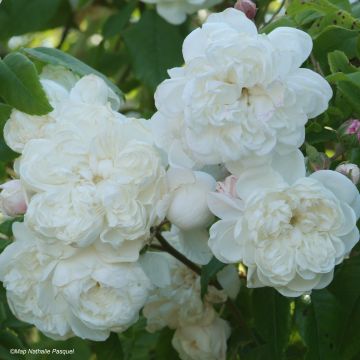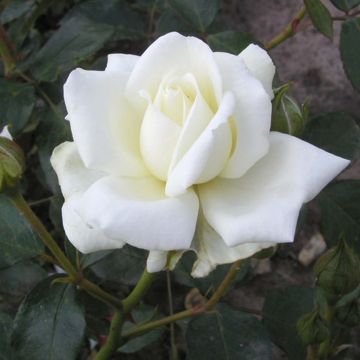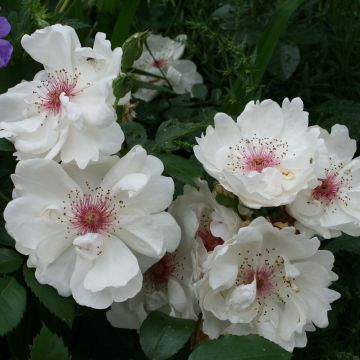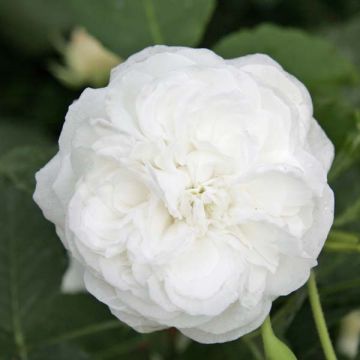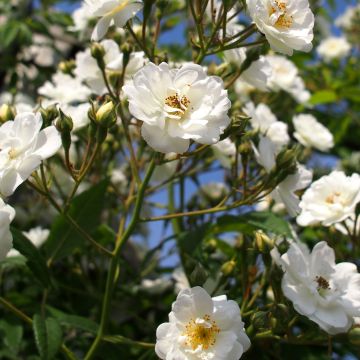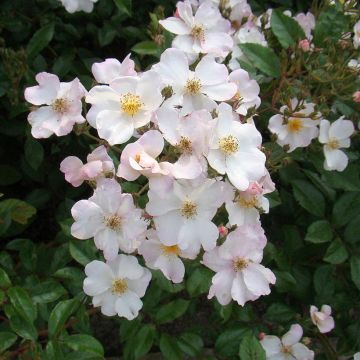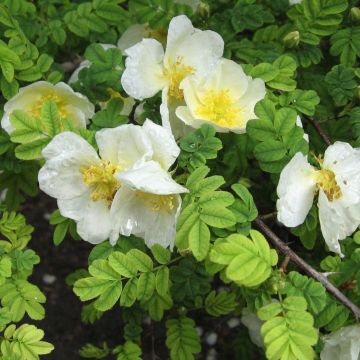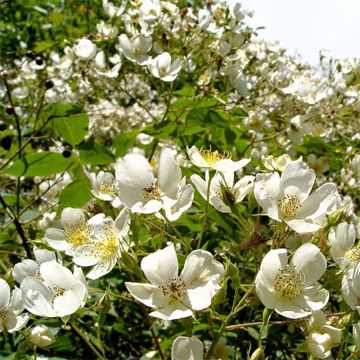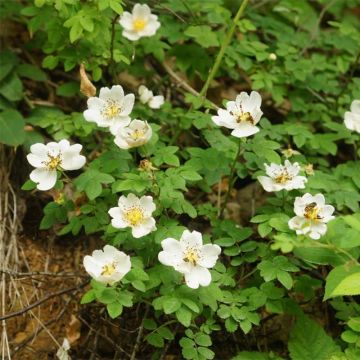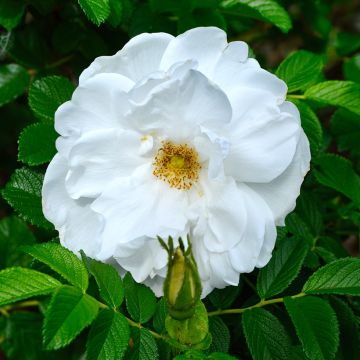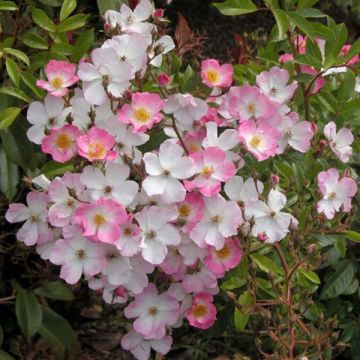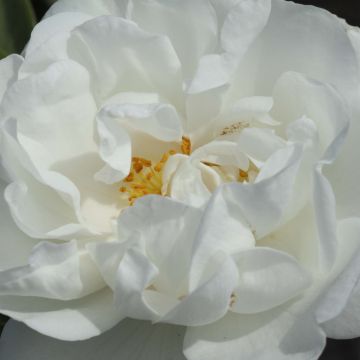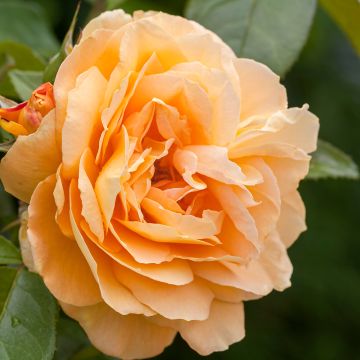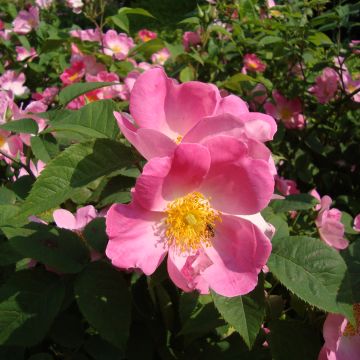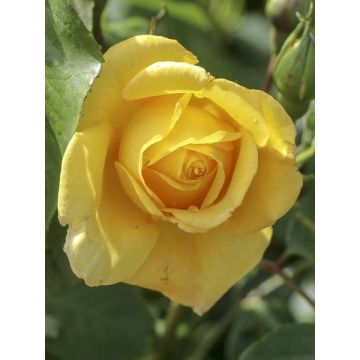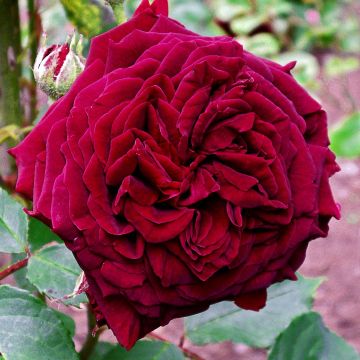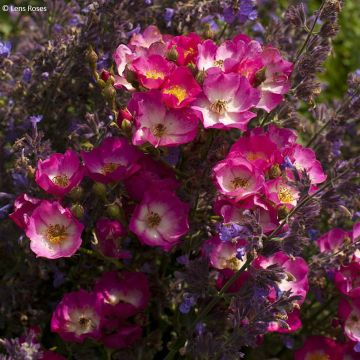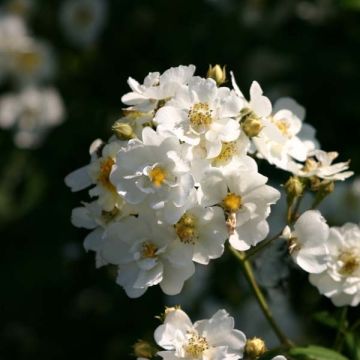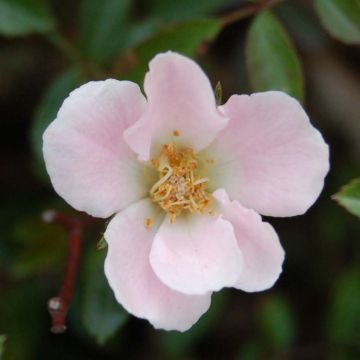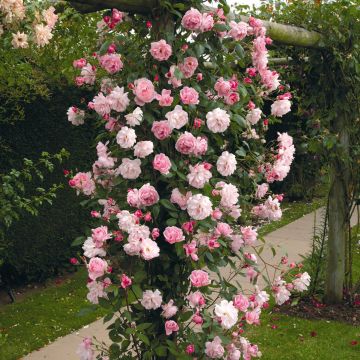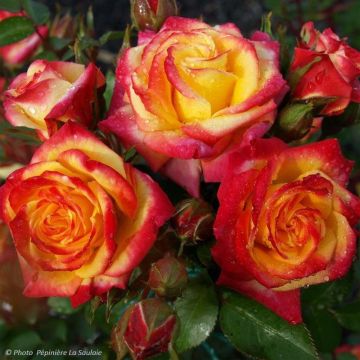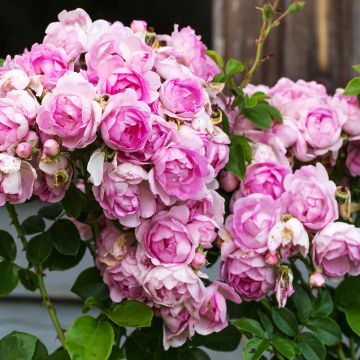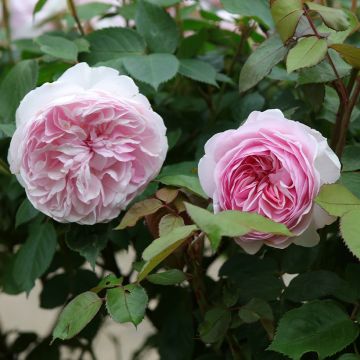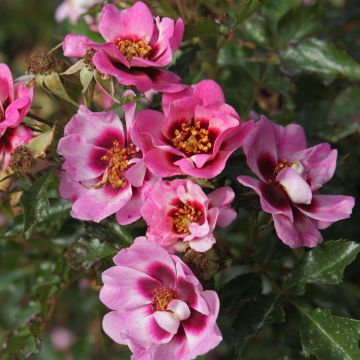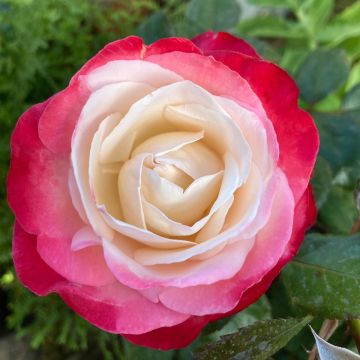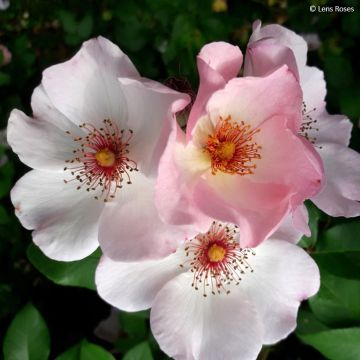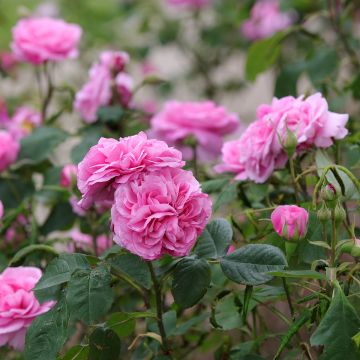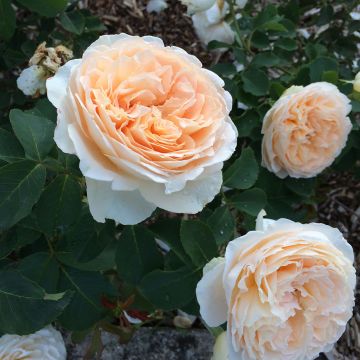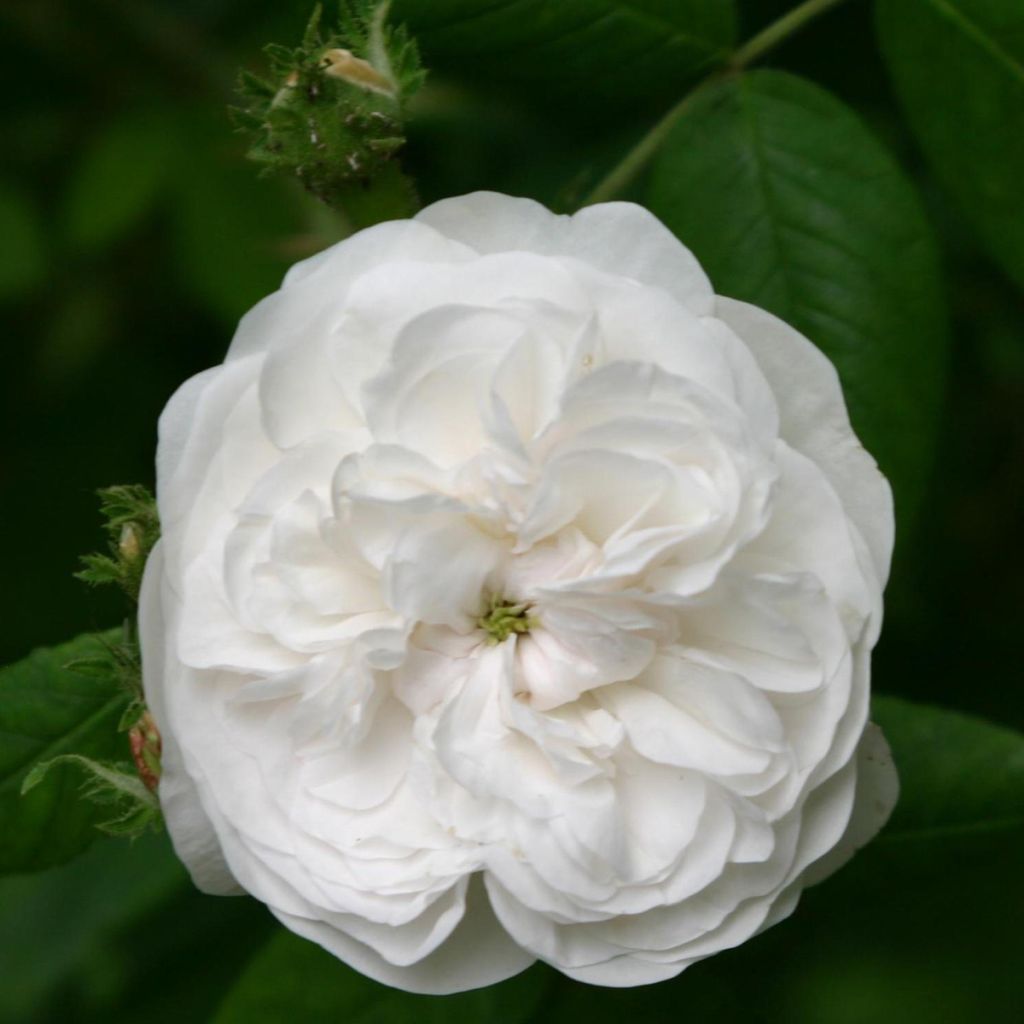

Rosa damascena Mme Hardy - Damask Rose
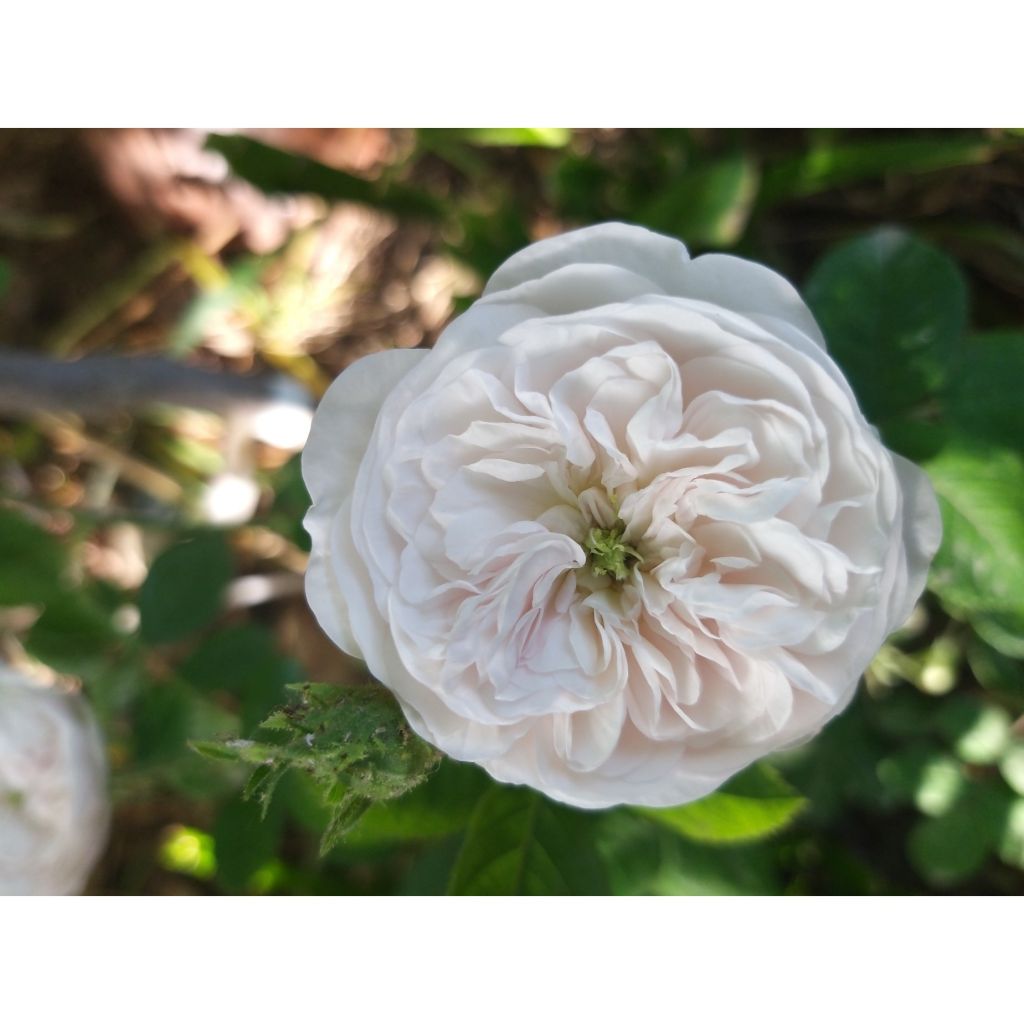

Rosa damascena Mme Hardy - Damask Rose
Rosa damascena Mme Hardy - Damask Rose
Rosa x damascena Mme Hardy
Damask Rose
Why not try an alternative variety in stock?
View all →This plant carries a 24 months recovery warranty
More information
We guarantee the quality of our plants for a full growing cycle, and will replace at our expense any plant that fails to recover under normal climatic and planting conditions.
From €5.90 for pickup delivery and €6.90 for home delivery
Express home delivery from €8.90.
From €5.90 for pickup delivery and €6.90 for home delivery
Express home delivery from €8.90.
Delivery to Corse prohibited: UE law prohibits the import of this plant from mainland France to Corse as part of the fight against Xylella fastidiosa. Please accept our sincere apologies.
More information

Does this plant fit my garden?
Set up your Plantfit profile →
Description
The 'Mme Hardy' Old Rose releases a magnificent fragrance of Damask rose with lemony notes. Its flowers are small, irregular in size, pure white, but with an exquisite shape, giving the overall appearance a pleasantly disordered charm that also adds to the charm of this variety. They are produced abundantly in early summer on a vigorous bush with lush, light green foliage. Its flowering is enchanting, both in terms of fragrance and visual appeal, in a white garden. It requires deep and fertile soil to bring out its best.
The 'Mme Hardy' Rose, sometimes called Rosa centifolia 'Alba', is an old horticultural variety, obtained in 1832 by the rose grower Julien-Alexandre Hardy (1787-1876). It is derived, among others, from Rosa x damascena, the Damask Rose, which itself is believed to be a hybrid of Rosa gallica and R. phoenicia or R. moshata, with the contribution of Rosa fedtschenkoana Regel. Hybrid Damask roses are distinguished by the sweet fragrance of their flowers, their prickly stems, and their adaptation to warm climates.
'Mme Hardy' forms a robust bush with an upright habit and very dense foliage, reaching at least 1.50m in height and 1.20m (3 to 4ft) in width. Its beautiful deciduous foliage, with 5 leaflets, is carried on sturdy, moderately spiny stems. Its colour is a bright and vivid green, and it has good disease resistance. It can sometimes become brown when exposed to intense sunlight after being wet by rain, without any consequences for its health. It flowers in June-July, for 5 to 6 weeks under the right conditions. White buds open into large, flat flowers measuring 5 to 10cm (3.9in), with less than 40 petals. They open in the shape of cups, then the outer petals curl while the centre petals remain incurved. After flowering, a small green centre can be seen at the heart of the pure white corolla. They are solitary or grouped in small bouquets and their fragrance is both sweet, with hints of honey, and strongly imbued with rustic notes.
The 'Mme Hardy' Rose is one of the most beautiful white roses of early summer, essential in a white garden and in a bridal bouquet. This sturdy, romantic, and fragrant bush will find its place in a country hedge or a white garden, alongside other fragrant shrubs such as mock oranges or white lilacs, in a harmonious colour scheme. In a flowerbed, its roses blend well with all kinds of perennials and shrubs in an informal manner, such as Abelias, dogwoods, barberries, catmints, cotton lavenders, Stachys lanata, white foxgloves, or paniculate Gypsophila. It will also thrive in the company of old perpetual roses ('Jacques Cartier', 'Félicité Parmentier', 'Deuil de Paul Fontaine') or as a solitary specimen, planted along a pathway or not far from the terrace, to enjoy its fragrance.
If you have enough space, English, Old or Shrub Roses are magnificent when planted in groups of three. They will grow together to form 'one' opulent bush that will flower even more generously.
Report an error about the product description
Rosa damascena Mme Hardy - Damask Rose in pictures
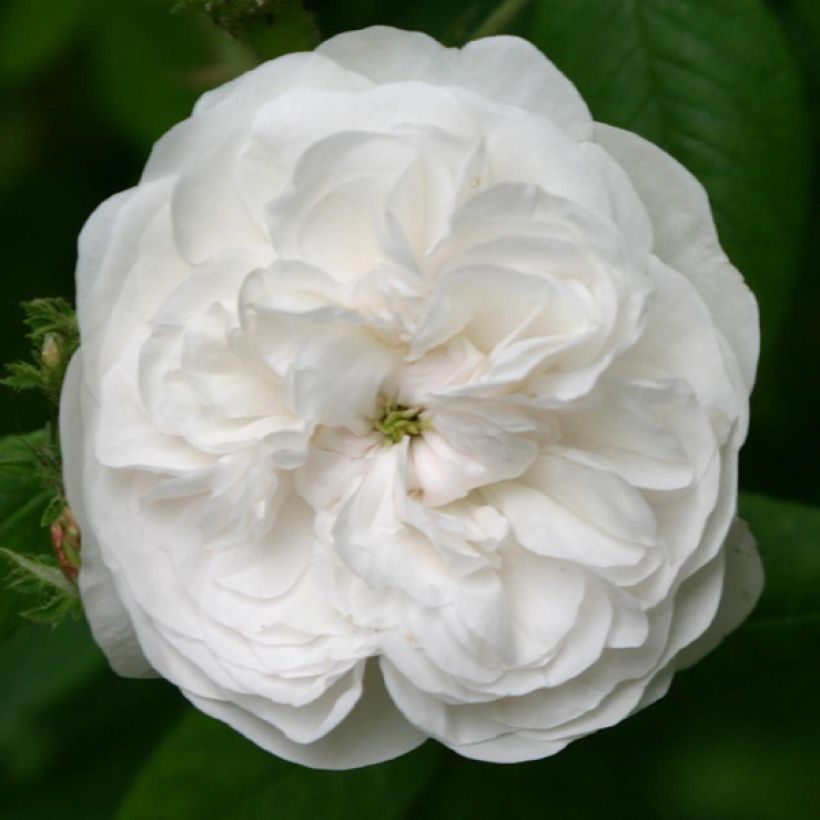

Plant habit
Flowering
Foliage
Botanical data
Rosa
x damascena
Mme Hardy
Rosaceae
Damask Rose
Cultivar or hybrid
Rosa canina Laxa (Wrapped bare root, 4L/5L pot)
Other Traditional Roses
Planting and care
Plant your 'Mme Hardy' Rose in a sunny or semi-shaded position, in a deep and fertile soil. Old roses are tolerant but do not appreciate excessive limestone. They will adapt to any garden as long as the soil is well worked, deep enough, not too heavy, and sufficiently rich. To plant your rose, work the soil by crumbling it well and put an amendment at the bottom of the planting hole, such as dried blood or dehydrated horn. Water abundantly after planting to remove air pockets, and during dry weather in the first two years. Water regularly for a few weeks to facilitate rooting.
Pruning old roses mainly consists of removing faded flowers as they appear, unless you want to keep the decorative berries.
Avoid pruning to maintain an interesting bushy habit.
However, in late winter (March), you can eliminate branches located in the middle of the bush that tend to suffocate it.
Roses are often spotted or unattractive at the end of summer, but this is not a problem for their development. These spots are not harmful to the rose; it is a natural phenomenon.
Planting period
Intended location
Care
-
, onOrder confirmed
Reply from on Promesse de fleurs
Fragrant Roses
Haven't found what you were looking for?
Hardiness is the lowest winter temperature a plant can endure without suffering serious damage or even dying. However, hardiness is affected by location (a sheltered area, such as a patio), protection (winter cover) and soil type (hardiness is improved by well-drained soil).

Photo Sharing Terms & Conditions
In order to encourage gardeners to interact and share their experiences, Promesse de fleurs offers various media enabling content to be uploaded onto its Site - in particular via the ‘Photo sharing’ module.
The User agrees to refrain from:
- Posting any content that is illegal, prejudicial, insulting, racist, inciteful to hatred, revisionist, contrary to public decency, that infringes on privacy or on the privacy rights of third parties, in particular the publicity rights of persons and goods, intellectual property rights, or the right to privacy.
- Submitting content on behalf of a third party;
- Impersonate the identity of a third party and/or publish any personal information about a third party;
In general, the User undertakes to refrain from any unethical behaviour.
All Content (in particular text, comments, files, images, photos, videos, creative works, etc.), which may be subject to property or intellectual property rights, image or other private rights, shall remain the property of the User, subject to the limited rights granted by the terms of the licence granted by Promesse de fleurs as stated below. Users are at liberty to publish or not to publish such Content on the Site, notably via the ‘Photo Sharing’ facility, and accept that this Content shall be made public and freely accessible, notably on the Internet.
Users further acknowledge, undertake to have ,and guarantee that they hold all necessary rights and permissions to publish such material on the Site, in particular with regard to the legislation in force pertaining to any privacy, property, intellectual property, image, or contractual rights, or rights of any other nature. By publishing such Content on the Site, Users acknowledge accepting full liability as publishers of the Content within the meaning of the law, and grant Promesse de fleurs, free of charge, an inclusive, worldwide licence for the said Content for the entire duration of its publication, including all reproduction, representation, up/downloading, displaying, performing, transmission, and storage rights.
Users also grant permission for their name to be linked to the Content and accept that this link may not always be made available.
By engaging in posting material, Users consent to their Content becoming automatically accessible on the Internet, in particular on other sites and/or blogs and/or web pages of the Promesse de fleurs site, including in particular social pages and the Promesse de fleurs catalogue.
Users may secure the removal of entrusted content free of charge by issuing a simple request via our contact form.
The flowering period indicated on our website applies to countries and regions located in USDA zone 8 (France, the United Kingdom, Ireland, the Netherlands, etc.)
It will vary according to where you live:
- In zones 9 to 10 (Italy, Spain, Greece, etc.), flowering will occur about 2 to 4 weeks earlier.
- In zones 6 to 7 (Germany, Poland, Slovenia, and lower mountainous regions), flowering will be delayed by 2 to 3 weeks.
- In zone 5 (Central Europe, Scandinavia), blooming will be delayed by 3 to 5 weeks.
In temperate climates, pruning of spring-flowering shrubs (forsythia, spireas, etc.) should be done just after flowering.
Pruning of summer-flowering shrubs (Indian Lilac, Perovskia, etc.) can be done in winter or spring.
In cold regions as well as with frost-sensitive plants, avoid pruning too early when severe frosts may still occur.
The planting period indicated on our website applies to countries and regions located in USDA zone 8 (France, United Kingdom, Ireland, Netherlands).
It will vary according to where you live:
- In Mediterranean zones (Marseille, Madrid, Milan, etc.), autumn and winter are the best planting periods.
- In continental zones (Strasbourg, Munich, Vienna, etc.), delay planting by 2 to 3 weeks in spring and bring it forward by 2 to 4 weeks in autumn.
- In mountainous regions (the Alps, Pyrenees, Carpathians, etc.), it is best to plant in late spring (May-June) or late summer (August-September).
The harvesting period indicated on our website applies to countries and regions in USDA zone 8 (France, England, Ireland, the Netherlands).
In colder areas (Scandinavia, Poland, Austria...) fruit and vegetable harvests are likely to be delayed by 3-4 weeks.
In warmer areas (Italy, Spain, Greece, etc.), harvesting will probably take place earlier, depending on weather conditions.
The sowing periods indicated on our website apply to countries and regions within USDA Zone 8 (France, UK, Ireland, Netherlands).
In colder areas (Scandinavia, Poland, Austria...), delay any outdoor sowing by 3-4 weeks, or sow under glass.
In warmer climes (Italy, Spain, Greece, etc.), bring outdoor sowing forward by a few weeks.

































